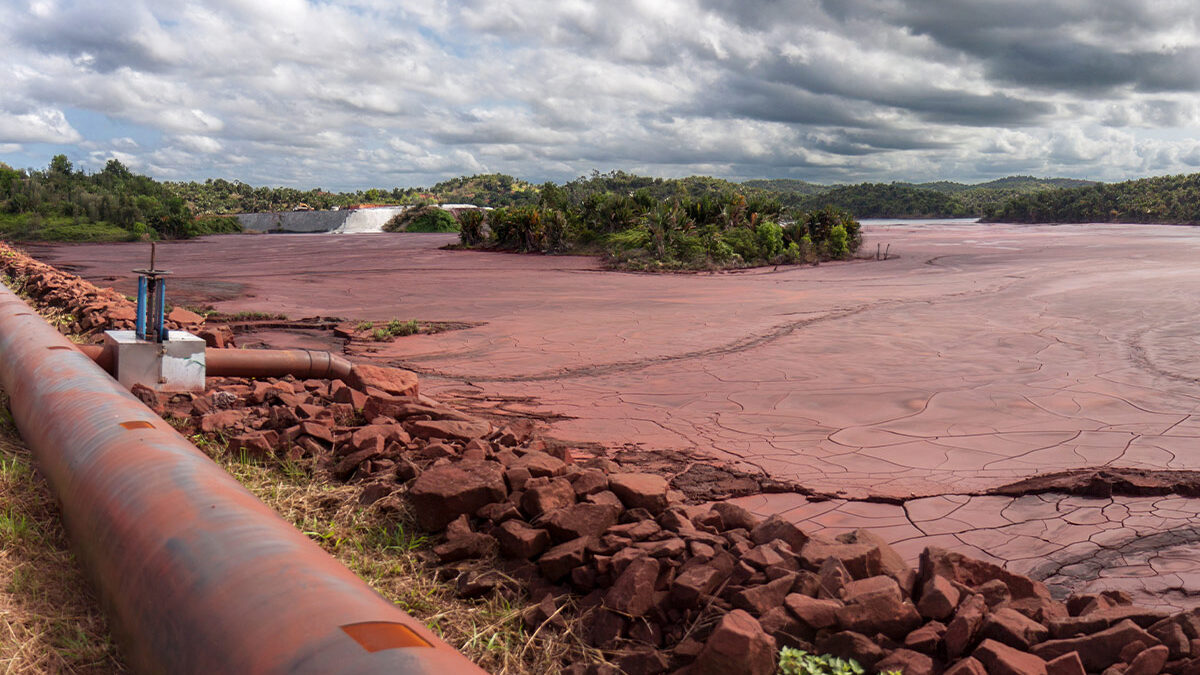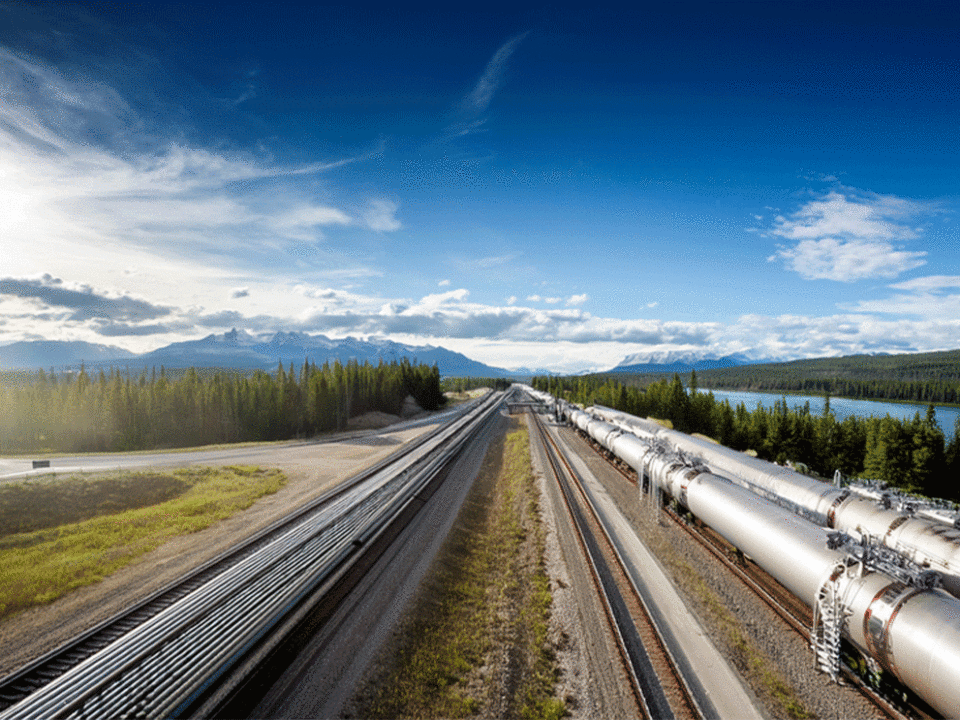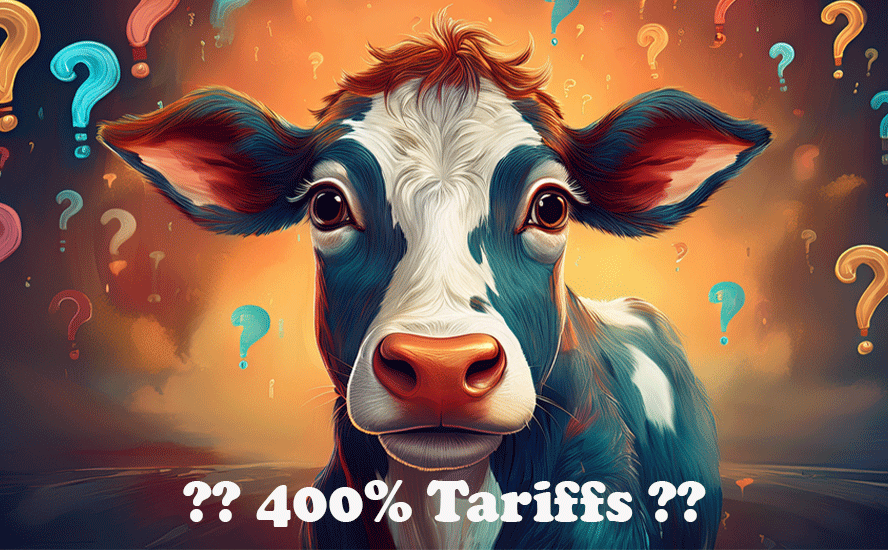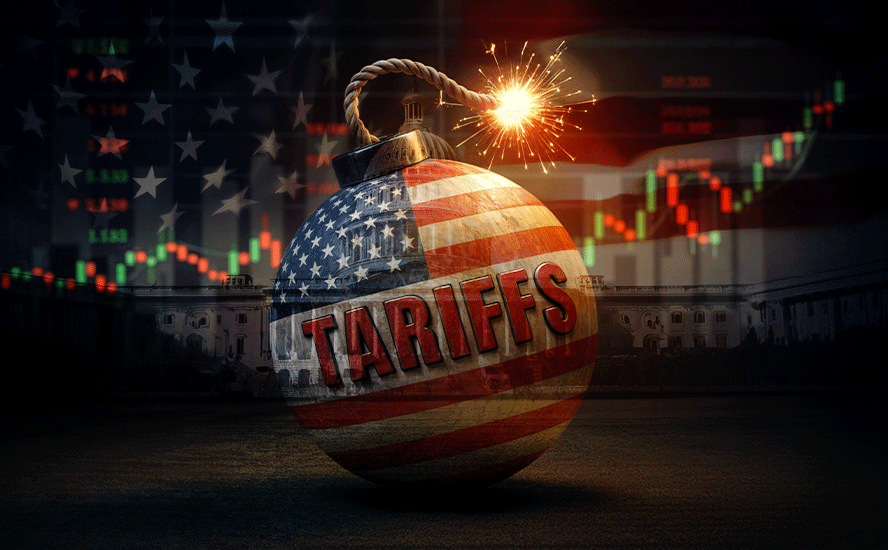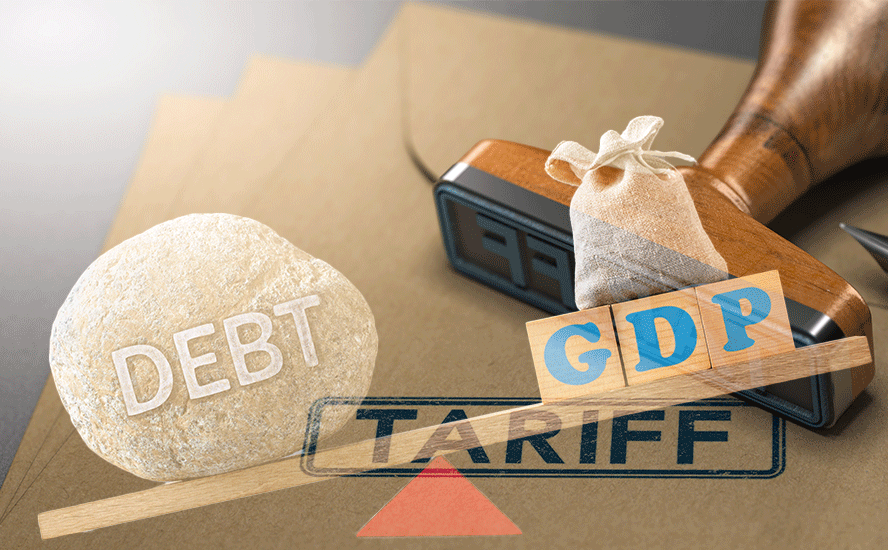Dark side of green
2021.05.07
In China’s Inner Mongolian city of Baotou, dozens of pipes churn out a torrent of thick black chemical waste that flows into an artificial lake filled with toxic sludge. A constant smell of sulfur pervades the apocalyptic scene. Most people in the West haven’t heard of Baotou but its mines and factories are one of the biggest suppliers of rare earth minerals used in a plethora of so-called “green” applications, everything from wind turbines to electric vehicles to nuclear reactors.
The ecological risks (Air pollution, Biodiversity loss (wildlife, agro-diversity), Desertification/Drought, Food insecurity (crop damage), Loss of landscape/aesthetic degradation, Soil contamination, Soil erosion, Waste overflow, Deforestation and loss of vegetation cover, Surface water pollution / Decreasing water (physico-chemical, biological) quality, Groundwater pollution or depletion, Mine tailing spills, Large-scale disturbance of hydro and geological systems), of rare earth mining aren’t confined to China, which mines and processes most of the materials.
In 2019 Malaysian environmental groups demonstrated over concerns about radioactive waste from Australian rare earths miner Lynas Corp’s processing plant located there.
In Indonesia, nickel is produced from laterite ores using the environmentally damaging HPAL technique. The advantage of HPAL is its ability to process low-grade nickel laterite ores, to recover nickel and cobalt. However, HPAL employs sulfuric acid, and it comes with the cost, environmental impact and hassle of disposing the magnesium sulfate effluent waste. The Indonesian government only recently banned the practice of dumping tailings into the ocean for new smelting operations, and it isn’t yet a permanent ban.
Chinese nickel pig iron producers in Indonesia now are looking to make nickel matte, from which to turn laterite nickel into battery-grade nickel for EVs. The process however is highly energy-intensive and polluting, as well as far more costly than a nickel sulfide operation (up to $5,000 per tonne more). According to consultancy Wood Mackenzie, the extra pyrometallurgical step required to make battery-grade nickel from matte will add to the energy intensity of nickel pig iron (NPI) production, which is already the highest in the nickel industry. We are talking 40 to 90 tonnes of CO2 equivalent per tonne of nickel for NPI, versus under 40 CO2e/t for HPAL and less than 10 CO2e/t for traditional nickel sulfide processing.
In an article about nickel mining in Indonesia, Reuters metals columnist Andy Home notes the timelines to commercial production and the costs of matte nickel processing are highly uncertain, as is the carbon footprint of the technology required to complete the ore-to-sulfate processing route, which is a big potential problem for an input into a green product, such as an electric vehicle.

What’s the point of making supposedly “green” battery components when the refining process is so dirty?
The mining industry may have achieved progress in recent years regarding environmental, social and governance (ESG), the new corporate buzz word, but in parts of the (mostly) developing world, the industry is still sporting a black eye.
Mining practices in the Democratic Republic of Congo (DRC) have elevated the issue of “conflict minerals” to the public consciousness, with stories of armed groups operating cobalt mines dependent on child labor, as well as in Guinea, where riots have broken out over bauxite mining.
Rare earths mining and processing in China, the extraction and refining of laterite nickel in Indonesia, and cobalt mining in the Congo, are three good examples of the disconnect between the rhetoric being delivered lately regarding the so-called new green economy, and reality.
In many respects the widely touted transition from fossil fuels to renewable energies, and the global electrification of the transportation system, are not clean, green, renewable or sustainable. We are calling this the dark side of green.
If it can’t be grown it must be mined
The adage “if it can’t be grown it must be mined” serves as a reminder that electric vehicles, transitional energy, and a green economy start with metals.
The fossil-fueled based transportation system needs to be electrified, and the switch must be made from oil, gas, and coal-powered power plants to those which run on solar, wind and thorium-produced nuclear energy. If we have any hope of cleaning up the planet, before the point of no return, a massive decarbonization needs to take place.
Without a doubt, this will involve a colossal boost in the production of mined metals, including lithium, cobalt and nickel for lithium-ion batteries used in EVs, renewable energy grid storage and consumer electronics; copper for electric vehicle motors, charging stations and renewable energy plants; silver for solar panels and EVs; and palladium to replace diesel-powered cars with gasoline models and for hybrids.
According to The International Energy Agency (IEA), reaching the goals of the Paris climate agreement would result in a quadrupling of mineral demand by 2040. For example an electric vehicle requires six times the amount of critical minerals as an internal combustion engine (ICE) car.
Sourcing all the energy from renewables by 2050 necessary to limit global warming to 1.5 degrees C would require a billion additional electric cars and a more than 30-fold increase in solar photovoltaic capacity, according to Foreign Policy.
By breaking free of fossil fuels, are we setting ourselves up for a new dependence on rare metals, and potential shortages of green economy staples such as lithium, cobalt, nickel, even copper?
Renewables reality check
We’ve all heard the hype about renewables, but how green are they? Especially considering all the metals that need to be dug up and processed before wind turbines, solar farms and hydroelectric dams can produce carbon-free electricity?
You may be surprised by the answer.
Let’s start with the grand-daddy of them all: solar. The sun is an enormous ball of helium and hydrogen without which life on Earth would obviously not exist. The possibility of harnessing the sun’s rays to produce electricity is a concept that has occupied scientists for decades. For many years it was too expensive, but now, the cost of solar has come down so much, it is competitive with even the cheapest energy sources including coal.
But to build a utility-scale solar power requires a large amount of land. This can interfere with other uses, such as food production. Clearing the land and moving the earth with machinery run on diesel fuel pollutes the air and causes soil compaction, erosion, and the alteration of natural drainage channels. Covering the area with PV modules involves the removal of plants, and the displacement of animal/ loss of habitat. These modules also require frequent washing with detergents that may pollute local water sources. Solar thermal power plants have similar impacts to PV systems but use more water, for cooling and as a working fluid.
Desertification is human-caused degradation of land, including unsustainable farming, overgrazing, clear-cutting, misuse of water and industrial activities. Climate change accelerates desertification because warmer temperatures dry out once-fertile land, which then makes the area even hotter. Removing plants from the ground also increases greenhouse gas emissions, since they can no longer serve as carbon sinks. As we strip away the amount of available land for food production, we are literally depriving ourselves of the means to survive.
The 17 components needed to build solar panels must all be mined. They include arsenic for semiconductor chips; phosphorous, selenium, silica, tellurium, gallium and indium for solar cells; bauxite, boron and cadmium for thin film solar cells; titanium dioxide for solar panels; coal and iron ore needed to make steel; copper for the wiring and solar cells; molybdenum for photovoltaic cells; and lead for batteries.
Wind is right up there with solar as a clean alternative to natural gas, coal and oil, but there are definitely environmental downsides. Chief among these are the negative impacts on bird life. Bird and bat populations can be injured or killed when they fly through spinning turbine blades. Offshore wind turbines can also harm marine birds. The noise that wind turbines produce may be a problem for people living near them. Some have even claimed they cause health effects such as migraines, dizziness and poor sleep quality.
Like solar power, wind requires large tracts of land that may be put to more appropriate use such as farming or conservation.
A few extra windmills might not seem like a big deal, but they’re a bit like prisons and garbage dumps: NIMBY.
A wind turbine has about the same number of mined components as a solar cell. They include aggregates, crushed stone, bauxite, clay, shale, gypsum, sand and gravel for cement and concrete; coal and cobalt for magnets; iron ore, limestone and molybdenum for steel and steel alloys; zinc for galvanizing; and rare earths for permanent magnets.
Keep in mind, though, this isn’t baseload power, it’s intermittent power. Releasing energy all at once, in a controlled way, to thousands of households, is not currently possible without lithium-based storage batteries, the materials for which, like EV batteries, must all be extracted from minerals.
The materials for wind and solar are mined in more than 60 countries. Some, like Peru, Chile, Mexico, South Africa, the United States and Australia, have laws and up to date mining codes that protect the environment and local labor forces from exploitation. Others, such as Indonesia, Venezuela, the Congo, Zambia and Papua New Guinea… not so much.
Where I live in British Columbia, we get most of our electricity from hydroelectric power. For the most part (not talking about the Site C dam), it’s reliable and clean. But the benefits all come after a dam has been built; the construction process is anything but green. The biggest and most obvious impact is on the people living in the area about to be flooded. The Three Gorges Dam in China displaced between 1.3 and 1.9 million people (figures in China are notoriously unreliable) in more than 1,500 villages, town and cities along the Yangtze River.
During the 1960s dozens of families living in the Arrow Lakes Valley, in southeastern BC, lost their homes and farmland when BC Hydro decided to block the Columbia River through creation of the Hugh Keenleyside Dam. Old-timers still hold a grudge against the power utility for forcing them out and burning structures that got in the way of the damming.
Large hydropower plants have a significant impact on animal habitats and the flow of natural watercourses, including preventing fish from swimming back to their spawning grounds.
There is always the potential for a dam to break causing monumental devastation. In 1975, the failure of the Banquiao Reservoir Dam and others in Henan province, China, caused the most deaths of any dam failure in history — an estimated 171,000 were killed and 11 million people lost their homes.
In the United States, there were 173 dam failures and 587 incidents reported between 2005 and 2013, according to the Association of State Dam Safety — an incident being an episode that, without intervention, would likely have resulted in the dam failing.
Getting back to the rhetoric around renewables “saving the world” from certain environmental destruction from climate change, fueled by carbon-based sources of energy and transportation, the problem with this thinking is that setting the sun on fossil fuels would also mean giving up thousands of products used in solar, wind and hydro, that are manufactured from crude oil. (for example, how do you make plastic from renewable energy? How about lights? Motors? Electronics?)
It isn’t just the mining of materials to make these products but transporting them. The Heartland Institute ran a column stating that A single electric-car battery weighs about 1,000 pounds. Fabricating one requires digging up, moving and processing more than 500,000 pounds of raw materials somewhere on the planet.
It’s no different for wind. All the mining and processing required to get the metals into wind turbines, then transporting them via custom-made heavy equipment to the site, and then decommissioning them, are energy-intensive activities that rely on fossil fuels and products made from crude oil.
Author Ronald Stein, P.E., author of ‘Just GREEN Electricity’, concludes:
We can be preached to forever about “clean electricity” messages and bedazzle farmers with the prospects of on-going revenue from renewables. However, the extensive mining worldwide for materials for millions of wind turbines and solar panels, and the decommissioning and restoration details, and the social changes that would be necessitated for societies to live without the thousands of products from petroleum derivatives remain the dark side of the unspoken realities of renewables.
Conflict minerals
Renewable energy proponents are reluctant to discuss the harsh labor conditions or non-existent environmental regulations associated with mining battery and energy metals.
Done improperly, mineral extraction has the potential to damage local communities and ecosystems, destroying cultures and biodiversity in the process.
‘Green Conflict Minerals’, a 2018 report by the International Institute of Sustainable Development, states that, while the surge in demand for green technologies should mean economic boons for communities near the required metals, strategic reserves can become fuel for exploitation if not managed responsibly. This a risk when they are found in countries already struggling with fragility and corruption.
The most obvious example is the DRC, where the majority of the world’s cobalt, a key ingredient in lithium-ion batteries, is mined, often by children in dangerous working conditions.
Last year about 1,300 civilians were killed in separate conflicts over eight months, involving armed groups and government forces in the eastern part of the country. More than half a million were forced from their homes.
The violence, which erupted again this week, threatens to upend mining in a country widely known to be the wealthiest in the world; its untapped mineral deposits have an estimated worth of $24 trillion. Militants often attack villages as a ruse for stealing metals and selling them on the black market:
The UN believes over 50% of the region’s 200 mines are controlled by armed forces which employ illegal taxation, extortion, forced labor, and violence to ensure the flow of mineral wealth. According to one CNN report eastern Congo’s armed groups generate some $180 million through the illicit trade of tin, coltan, tungsten, and gold which are easily traded across the porous eastern frontier and funneled into the international market…This volatile mixture of extraordinary mineral wealth, ethnic tension, and proxy armies can drag the region into another brutal war…With tensions high and 1994’s genocide still casting its shadow over the region another devastating war remains a looming and distinct possibility.” Nathan William Meyer, ‘Deal of the Century: Will Chinese Investment Save Congo?’
In 2016, Amnesty International, via Big Think, found that over two dozen major electronics and automotive companies were failing to ensure that their supply chains of cobalt sourced in the DRC didn’t include child labor.
Transparency of supply chains is one way to reduce the trade in conflict minerals including cobalt, diamonds and gold.
ESG
Therein lies the quandary. As we scale up clean energy technologies in pursuit of ambitious climate goals, we must protect the health, environment/ water and human rights of communities located close to mining operations.
But the only way to feed a world run entirely on renewables, heck, even to make a dent in fossil fuel-dominated energy markets, is to open many more mines. Large-scale mining done by unethical companies, in countries that turn a blind eye to environmental and employment protection, threatens to strip-mine forests/ mountain tops, all to feed the “green dream”.
However, there is a way forward, and that is to ensure that mining companies have strong ESG (economic, social and governance) policies in place so that are not participating in corruption and are mining sustainably in ways that do not hurt the environment. ESG also mandates that companies employ local workers and treat them right and use in-country suppliers.
Once considered a topic of minimal relevance to the mining industry, which, unfazed by its poor reputation, seemed content to carry on, business as usual, ESG is finally getting the attention it deserves from an industry that has frankly had its head in the sand.
Global miners are starting to pay attention to their internal practices. In the last quarter of 2020, a steady stream of environmental pledges pushed the industry’s ESG rating into positive territory from a negative reading during Q3 2020.
In January Mining Shared Value (MSV), a non-profit initiative of Engineers Without Borders, announced that four mining firms, including Ivanhoe Mines and Lundin Gold, have adopted the Mining Local Procurement Reporting Mechanism (MLPRM), with two more expected to confirm shortly.
More evidence of the growing importance of ESG in mining comes from a survey, conducted during the second half of 2020, of 67 decision-makers by global law firm White & Case.
Eighty percent of respondent think ESG will play a greater part in investors’ decision-making in the 2020s, and 14% expect ESG will lure generalist investors to allocate capital to the sector. Twenty two percent see ESG as a way to build greater resilience in future, second only to supply chain excellence.
Conclusion
The rush to a new green economy has a dark side. As the demand for metals required to fuel it continues to ramp up, the pressures among mining companies to meet that demand are only going to intensify.
Many more new mines will need to be build and existing mines will have to produce more. A lot of the “low-hanging fruit” has already been picked. The minerals left are often found in remote areas far from the prying eyes of government officials, or in countries that lack the appropriate legal and environmental protections.
Despite the most optimistic predictions of a carbon-free world run on renewables, a lot can go wrong. The amount of money involved — commodities consultancy Wood Mackenzie predicts $1 trillion will have to be invested in key energy transition metals by 2035 to meet the growing needs of decarbonization — carries with it the temptation to rape and pillage the planet.
We’ve seen what has happened in China and Indonesia, where a lack of regulatory oversight over rare earth and nickel mining/ processing has led to environmental degradation, or the Congo, where political instability has allowed the proliferation of armed groups who control the mines and employ child labor.
Doubtless there are many other countries where shady mine operators dig up “dirty” energy and battery metals for profit, with little regard to the consequences — a practice that is being encouraged by higher commodity prices.
We’re not saying the green energy dream is destined to become a nightmare, but governments and mining companies need to be held accountable, through mining codes and supply chain/ goverance transparency, and hold themselves accountable, through ESG, in order to make this “go green plan” a green success.
Richard (Rick) Mills
aheadoftheherd.com
subscribe to my free newsletter
Legal Notice / Disclaimer
Ahead of the Herd newsletter, aheadoftheherd.com, hereafter known as AOTH.
Please read the entire Disclaimer carefully before you use this website or read the newsletter. If you do not agree to all the AOTH/Richard Mills Disclaimer, do not access/read this website/newsletter/article, or any of its pages. By reading/using this AOTH/Richard Mills website/newsletter/article, and whether you actually read this Disclaimer, you are deemed to have accepted it.
Any AOTH/Richard Mills document is not, and should not be, construed as an offer to sell or the solicitation of an offer to purchase or subscribe for any investment.
AOTH/Richard Mills has based this document on information obtained from sources he believes to be reliable, but which has not been independently verified.
AOTH/Richard Mills makes no guarantee, representation or warranty and accepts no responsibility or liability as to its accuracy or completeness.
Expressions of opinion are those of AOTH/Richard Mills only and are subject to change without notice.
AOTH/Richard Mills assumes no warranty, liability or guarantee for the current relevance, correctness or completeness of any information provided within this Report and will not be held liable for the consequence of reliance upon any opinion or statement contained herein or any omission.
Furthermore, AOTH/Richard Mills assumes no liability for any direct or indirect loss or damage for lost profit, which you may incur as a result of the use and existence of the information provided within this AOTH/Richard Mills Report.
You agree that by reading AOTH/Richard Mills articles, you are acting at your OWN RISK. In no event should AOTH/Richard Mills liable for any direct or indirect trading losses caused by any information contained in AOTH/Richard Mills articles. Information in AOTH/Richard Mills articles is not an offer to sell or a solicitation of an offer to buy any security. AOTH/Richard Mills is not suggesting the transacting of any financial instruments.
Our publications are not a recommendation to buy or sell a security – no information posted on this site is to be considered investment advice or a recommendation to do anything involving finance or money aside from performing your own due diligence and consulting with your personal registered broker/financial advisor.
AOTH/Richard Mills recommends that before investing in any securities, you consult with a professional financial planner or advisor, and that you should conduct a complete and independent investigation before investing in any security after prudent consideration of all pertinent risks. Ahead of the Herd is not a registered broker, dealer, analyst, or advisor. We hold no investment licenses and may not sell, offer to sell, or offer to buy any security.
Legal Notice / Disclaimer
Ahead of the Herd newsletter, aheadoftheherd.com, hereafter known as AOTH.Please read the entire Disclaimer carefully before you use this website or read the newsletter. If you do not agree to all the AOTH/Richard Mills Disclaimer, do not access/read this website/newsletter/article, or any of its pages. By reading/using this AOTH/Richard Mills website/newsletter/article, and whether you actually read this Disclaimer, you are deemed to have accepted it.

